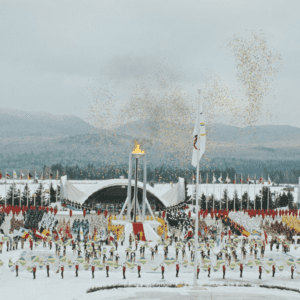Take a drive to Fort Ticonderoga for a blend of history and natural beauty.
About Fort Ticonderoga
Take a drive to Fort Ticonderoga for a blend of history and natural beauty.
In their own words “welcoming visitors since 1909, Fort Ticonderoga is a museum, historic site, major cultural destination, and center for learning, on-site and across the globe through For Ticonderoga’s Center for Digital History. As a multi-day destination and premier place to learn more about North America’s military heritage, Fort Ticonderoga engages more than 70,000 visitors each year. Presenting vibrant programs, historic interpretation, boat cruises, tours, demonstrations, and exhibits, Fort Ticonderoga is open for daily visitation May through October and special programs during Winter Quarters, November through April.”
Fort Ticonderoga is a premier living history site whose staff brings history to life every day. 2024 visitors will “experience 1774 and the peacetime garrison life for the British soldiers and their families that lived at Fort Ticonderoga 250 years ago.”
A Brief Backstory
Built by the French in 1755, the fort was originally named Fort Carillon. The British attacked in 1758 and took the fort in 1759. This is also when it was renamed Fort Ticonderoga. America’s first victory at the fort was on May 10, 1775, and they held the fort until 1777 when the British took it back. Other than a short re-occupation in 1781, the fort sat in ruin until it became the property of New York State in 1790. In 1820, Ferris Pell purchased the fort and it became the first preservation of a historic battlefield in American History. Restoration of the fort began in 1908 and Fort Ticonderoga Museum opened to the public on July 6, 1909.


Visiting the Museum
Visiting Fort Ticonderoga is a must for any history buff. The site itself is exploding with history and the staff are all so knowledgeable. I find it so impressive the amount of information they retain! This was proven within the first five minutes of me touring the property. I started in the Officers’ Barracks where you can visit tailoring and shoemaking. All the clothing and shoes worn by the staff (who dress in time-period attire) are made on-site. During my visit, they were working on a wool coat. If one person were making it, it would take around 30 hours to complete. They try to have multiple people work on different sections of a piece (like the coat) so that four can complete it in a day. They have pieces that you can touch and try on. I tried on a wool coat, which was heavier than I was expecting! I couldn’t imagine having to wear that on a hot summer day. They do wear linen shirts under the coat, the same as they would have in 1774. These are easier to wash more frequently, which they would do every few wears during that time.

After visiting the Tailor, I went next door and chatted with the shoemaker and some other reenactors. They were making dinner, which they do every day. Dinner to them would be lunch to us, but it was their largest meal of the day. Today they were making a cucumber salad and a big slab of meat. Their meal of the day is always per the year being re-enacted. There is also a room with a large table where they dine together. In 1774 they all would have sat around the table to have their meal together. I was also told that they ate pretty well because of the large gardens on site that provided fresh vegetables. They also hunted and fished.
Lastly in the Officers’ Barracks, I met one of the shoemakers. He had an endless amount of information about how they make and repair shoes and how soldiers would have purchased their shoes during the war. He can tell you about how long shoes would last on different people based on what they were doing and how the shoes were treated. He also said that the shoes they make are based on shoe fragments found in a shipwreck on site.
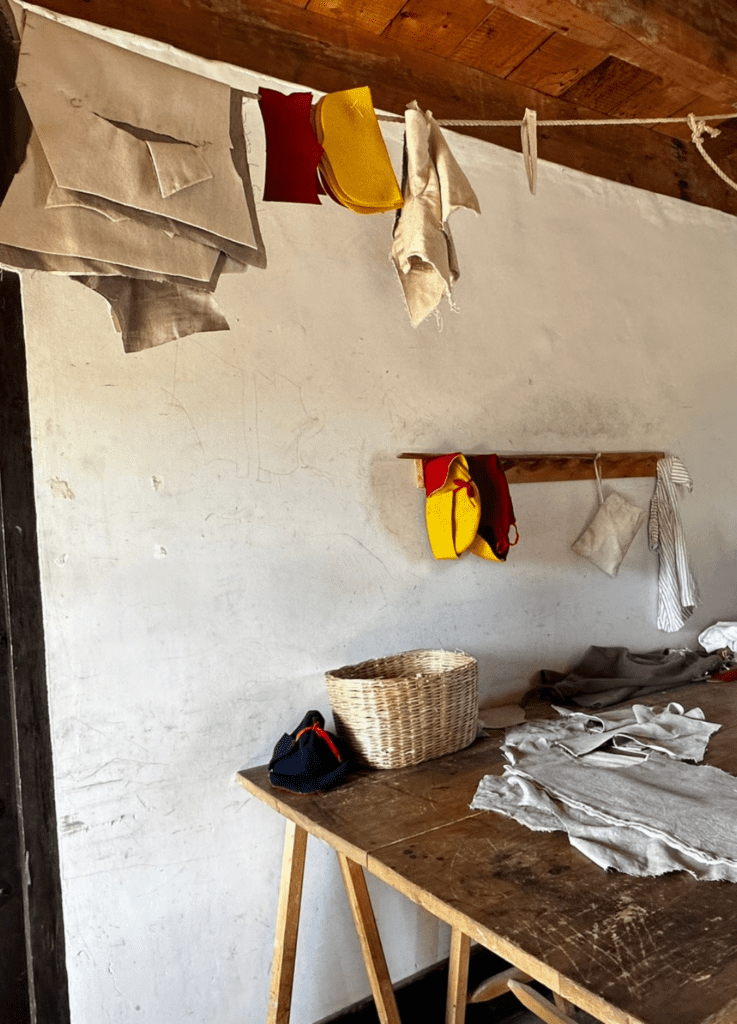
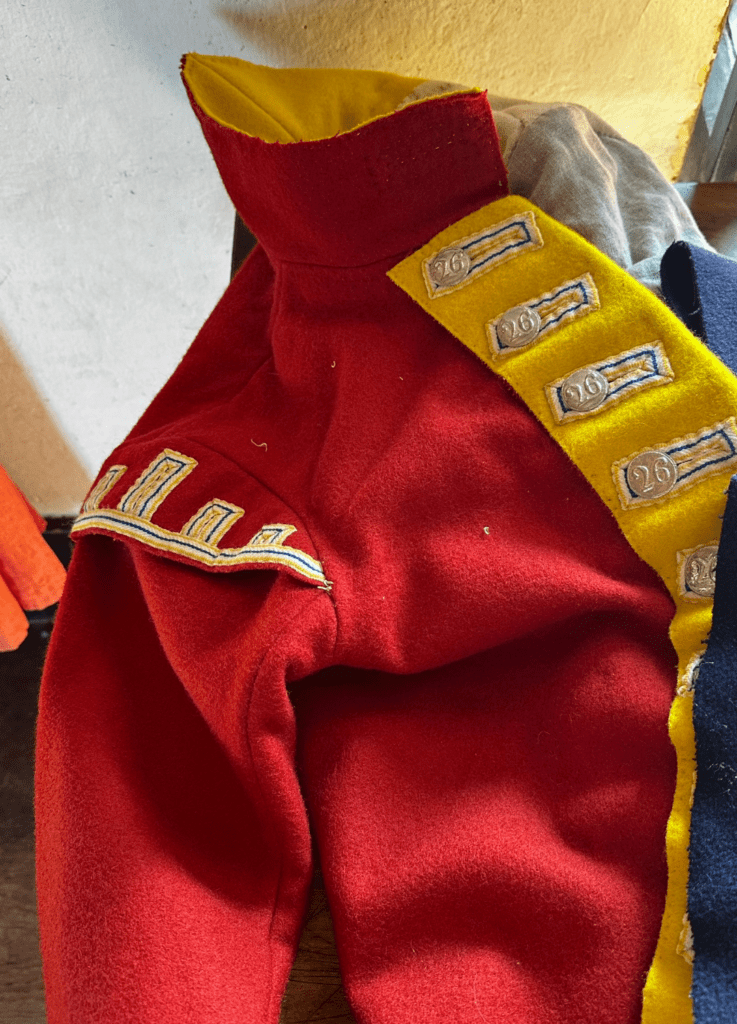
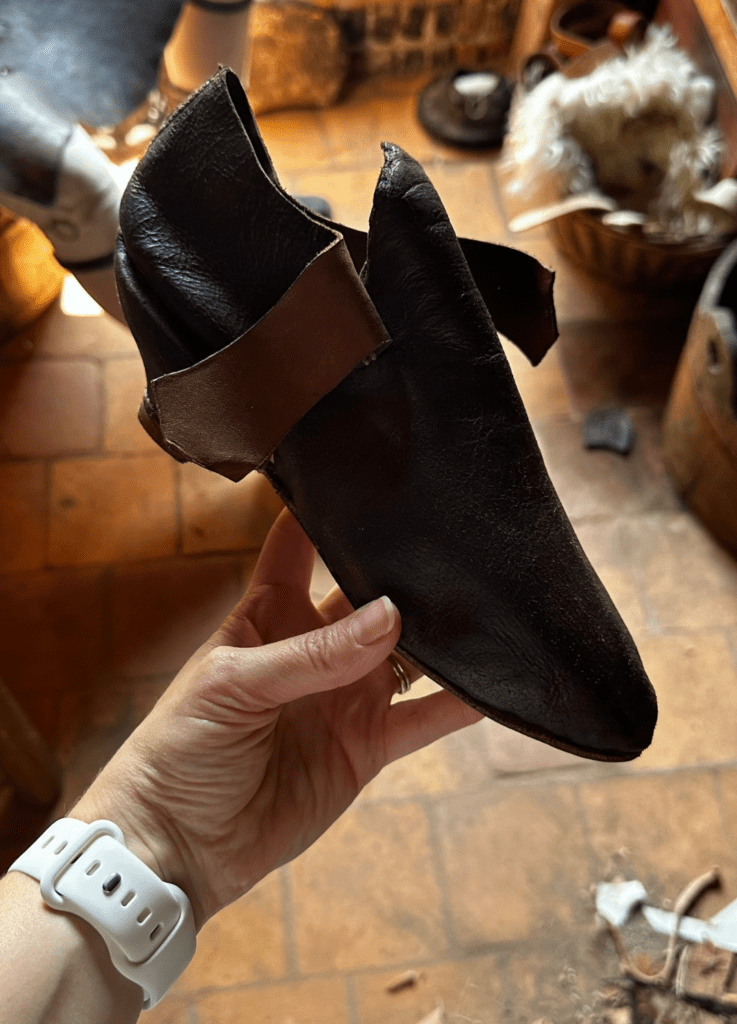
After the Officers’ Barracks, I headed out to watch the musket firing demonstration. This is something that is done every day at 11 am. It takes about 25 minutes as the reenactors go through loading, firing, and various traditions that soldiers would have done in 1774. After firing, guests are allowed to move closer and ask questions. After the demonstration, I joined a guided museum tour of the Soldiers’ Barracks and Mars Education Center. There are two museum-guided tours daily, one at 11:30 am and one at 2:30 pm. Both are 30 minutes long. It takes a lot longer than 30 minutes to see everything in the Soldiers’ Barracks and Mars Education Center, so this is just an inside scoop on the most significant, rare, and interesting pieces in the collection, plus a chance for guests to ask questions.
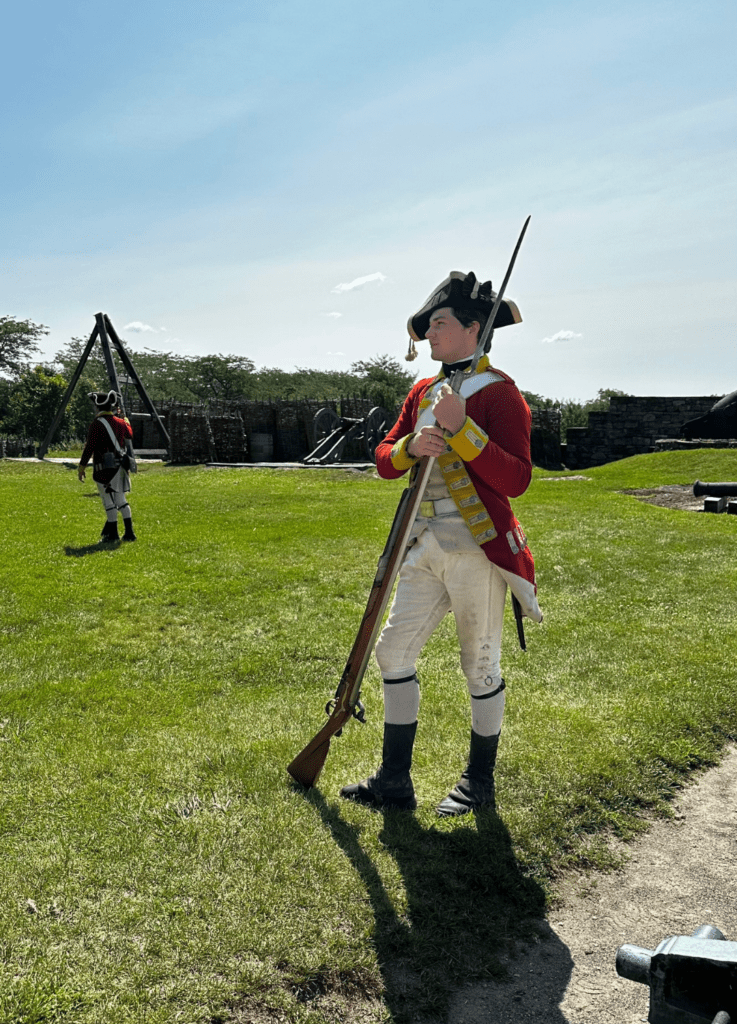

The Soldiers’ Barracks were reconstructed in the 1930s and offer three floors of exhibits and artifacts. The museum has over 250,000 artifacts, but only 2% are shown at one time. This includes pieces that were found on the grounds. Of this large number of items, only two pieces prove that women were here!
The Mars Education Center has two floors of exhibits and artifacts, including a howitzer from Philly, which is rare because most were not made in America. In total, the museum has 180 pieces of artillery (cannons, mortars, howitzers) which is actually more than were on-site during the war.
After the tour, I explored some of the exhibits we skipped over during the tour before grabbing a bite to eat. They have a cafe on the property where you can sit and eat, or do as I did and order ahead. I ordered ahead and explored the gift shop while I waited for my lunch to be ready. I then headed over to eat in the garden before catching the boat cruise.
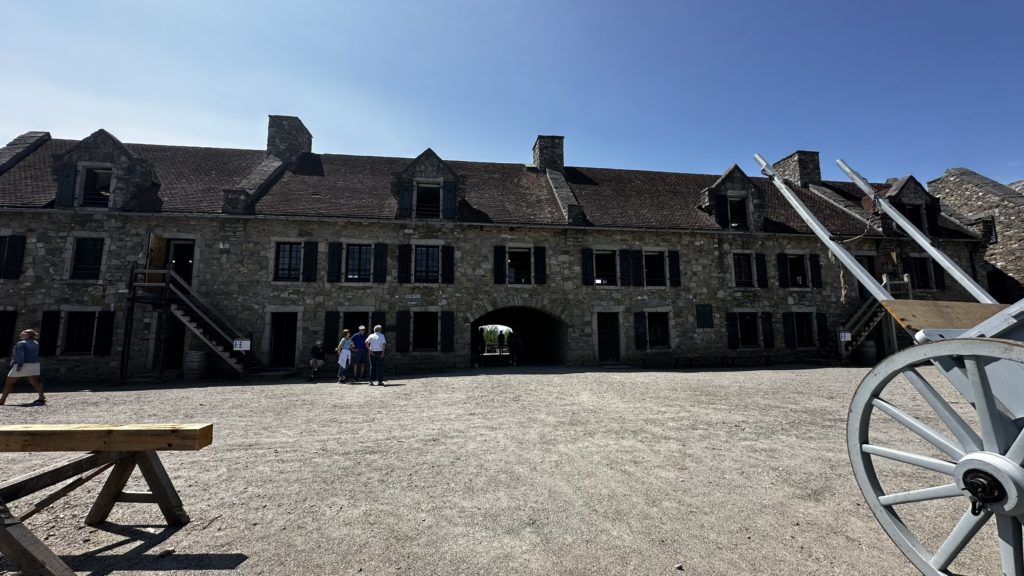
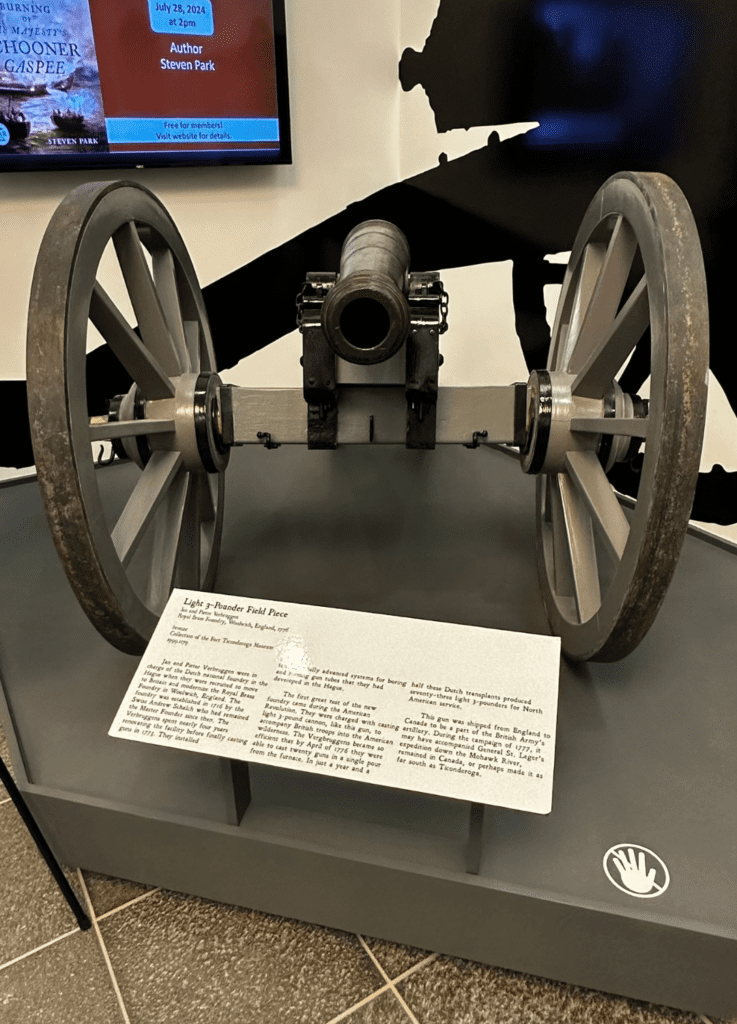
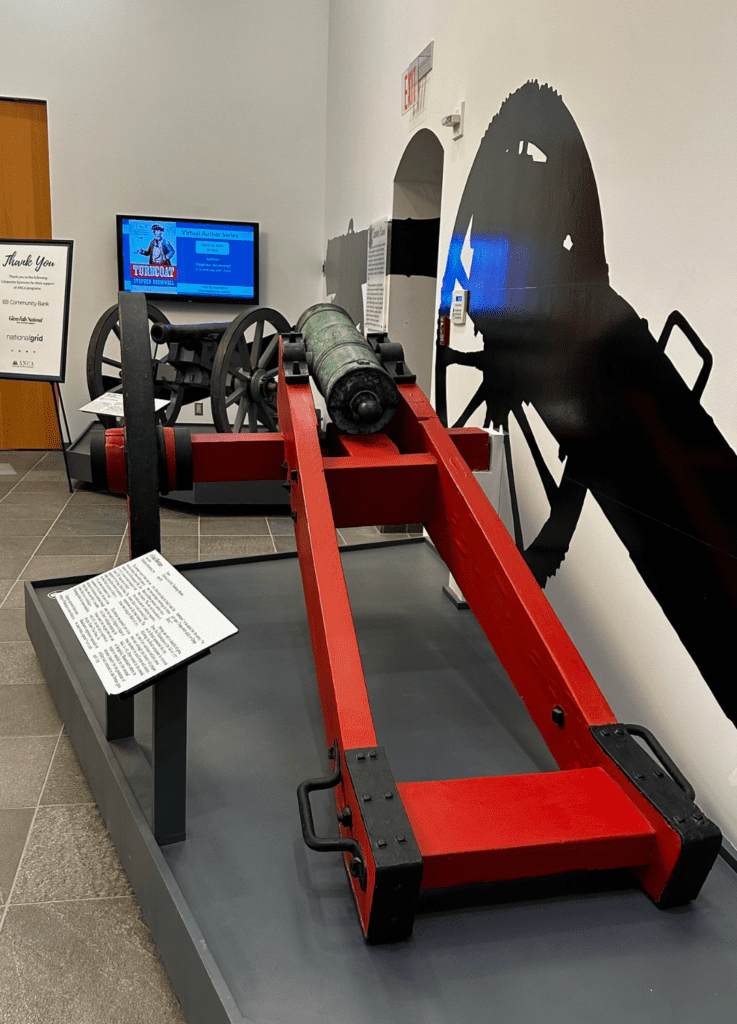

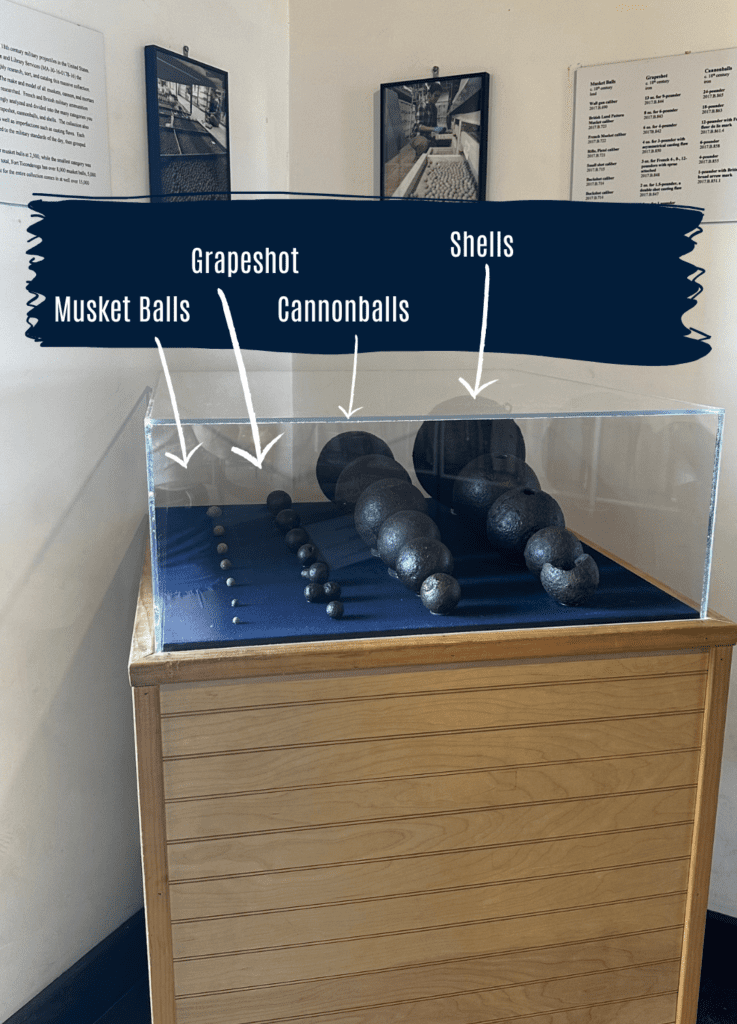
Cruise Lake Champlain on the Carillon
The boat cruise is a 75-minute guided tour on Lake Champlain. You’ll ride the Carillon – named after the original name of the fort, a tour boat built in 1990. You’ll take in panoramic vistas while learning some interesting facts about Fort Ticonderoga and Lake Champlain. The cruise will take you over multiple boat wrecks, one of which you can see on the sonar (sit towards the front of the boat for the best views!) We also learned that one of the shipwrecks, the Duke of Cumberland, was raised in 1909 and completely rotted away within a few years, so they left the sister ship, the Boscawen, at the bottom of the lake. In the late 1980s/early 90s, divers went down and were able to salvage artifacts from the Boscawen. It seemed like the British left virtually everything aboard when they abandoned it! The ship is now the property of New York State, but Fort Ticonderoga proudly displays the artifacts. You will also pass over parts of an old bridge that was never finished and can see an original log caisson (support structure) on the sonar. The water levels of the lake are much higher today which is why it is under water, but would have stuck up in the 18th century. Not only was the boat cruise informational, but it was such a beautiful day to be out on the water enjoying the sunshine! The boat also has a selection of beer, wine, sodas, and snacks for purchase. For cruise dates, times, and reservations, you can visit the Guest Services Desk or the Fort Ticonderoga website.

The King's Garden
After the boat tour, I walked through the King’s Garden to get back to the fort. The Garden is the largest in the Adirondack-Lake Champlain region and one of the oldest gardens in America. It was originally designed in 1921 by one of America’s first female landscape architects, Marian Cruger Coffin. It contains annuals and perennials that are carefully arranged by color and form. Heirloom flowers and modern cultivars are used to recreate the historic planting scheme. The garden was restored in the late 1990s with the help of the original planting plan from Marian. Not all plants were available which is why some substitutions had to be made. The garden is designed to bloom throughout the opening season of the museum, so every few weeks it feels like a new garden.
Outside of the walled King’s Garden, there are also smaller Discovery Gardens. Here you can see flowers and vegetables, a sunflower house, and a children’s garden. This allows guests to get up close and learn more about each plant. After a long, lovely visit, I left the garden and followed a beautiful tree-lined path back to the road up to the fort. I even saw some drummers walking down on my way! It was a great end to a great visit.
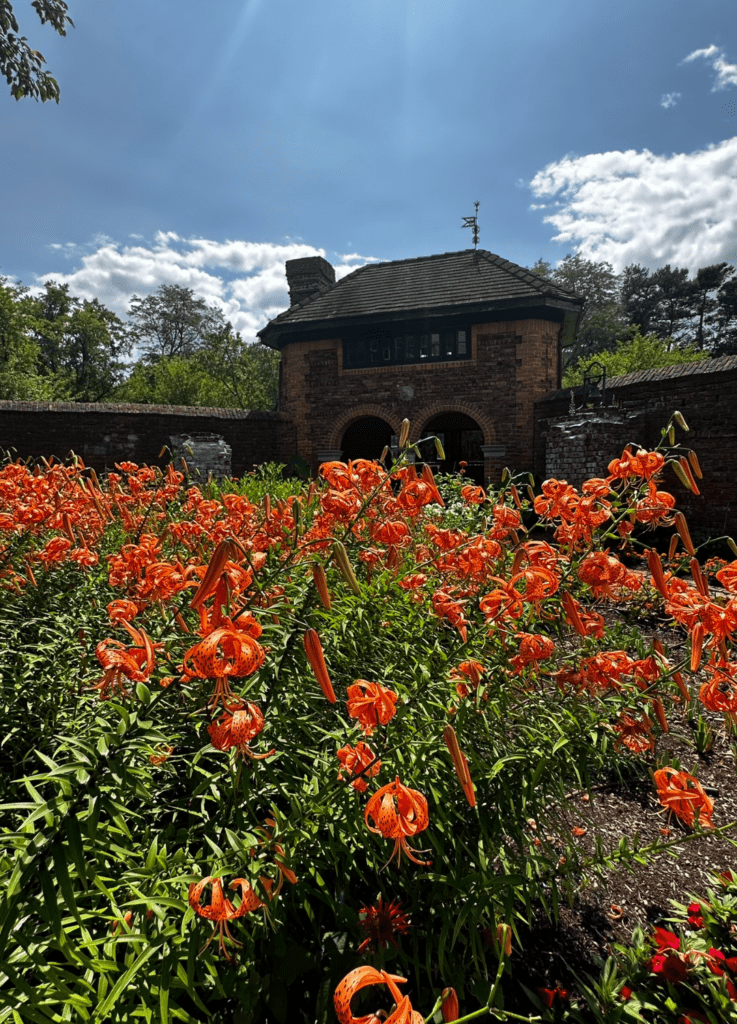


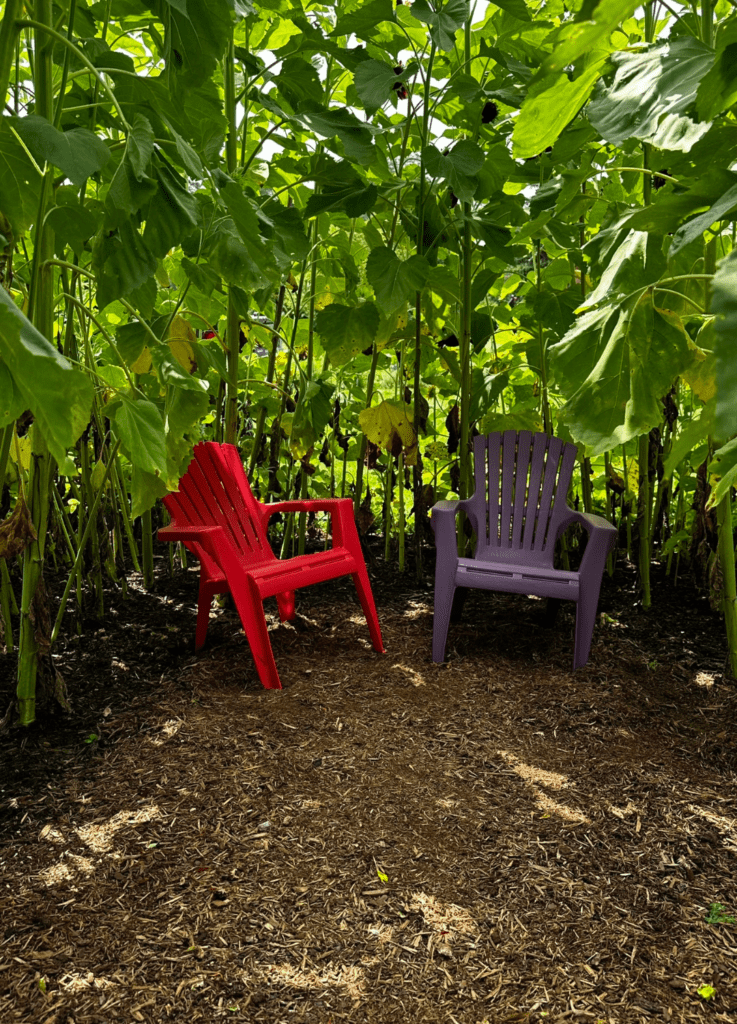
I didn’t get the chance to do it, but there is also a daily guided tour at Mount Defiance (the mountain overlooking Fort Ticonderoga.) The 30-minute tour is great for learning about the legacy of the mountain and is included with your ticket.
More Blogs
45th Anniversary of the 1980 Winter Olympics
Celebrate the 45th Anniversary of the 1980 Winter Olympics! Photo...
Read MoreWhat to do on your 2024 holiday trip to Lake Placid
What to do on your 2024 holiday trip to Lake...
Read MoreThe only thing we overlook is the lake
Surrender yourself to the natural and untouched beauty of the Adirondack Mountains at the first resort in the U.S. to receive the Audubon International’s Platinum Eco Rating for Hotels. There are now only six hotels in the United States to obtain this honor! It’s a place to renew yourself on the serene shores of Mirror Lake, and take in the history of the town, just steps away from the famed Olympic Village and the heart of Lake Placid, New York. No other place on earth provides this unique blend of comfort, rejuvenation, or one-of-a-kind experiences. Start planning your stay at the Golden Arrow Lakeside Resort now!


